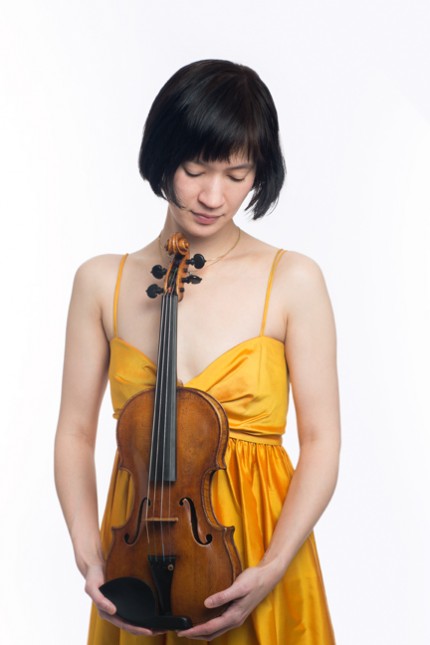Cuckson, Yu offer rewarding program of experimental works for Contempo

In introducing Contempo’s recital Sunday afternoon at the Logan Center Penthouse, artistic director Shulamit Ran spoke of a desire that concerts once again become a destination for people “who want to know what is going on.”
Indeed, Contempo is certainly doing its part. Sunday’s adventuresome program spotlighted experimental music for violin and piano by mostly living composers spanning several generations, performed by violinist extraordinarie Miranda Cuckson and pianist Ning Yu.
Russian composer Sofia Gubaidulina’s Dance on a Tightrope from 1993 opened the program, a work that starts with a single note that gradually expands to a would-be virtuoso phrase that never quite competes itself. The tentative violin is answered by prepared piano wherein Yu plucked the piano strings like a zither with finger picks and used a glass over the strings to make over-toned swirling effects.
Cuckson’s violin at least got off some lines here and there, Yu’s piano accompaniment was by and large reduced to an ambient role, as if the piano were a echoed soundbox of the violin’s intentions.
The piece builds to a rumbling climax where the piano is almost trainlike in its fragmented ferocity while the violin gradually enters the upper limit of pitch and lowest level of dynamics possible, rendered with great skill and artistry by Cuckson.
Austrian composer Georg Friedrich Haas’s da terrae fine for solo violin from 2001 is a manifesto of microtonality. Like the Gubaidulina piece, it also starts with a single note, but as the music expands, it struggles — indeed, teases — to find what the listener wants to fill in as the natural aural conclusion of each phrase with deliberately, almost funhouse-like diatonic distortion.
South Korean composer Unsuk Chin’s Etudes for solo piano — three of which were performed with great gusto by Yu — owe a debt to the most advanced of Bartók’s Mikrokosmos in their virtuosity and clever conceptions. They are very chromatic, yet like all of the pieces on the program, only flirt on the edge of atonality, without quite crossig the line.
As a fitting nod to the University of Chicago’s own compositional program, Cuckson played a 2012 solo violin piece, Nol-i (l) by South Korean composer and Ph.D. candidate Jae-Goo Lee.
The work uses the violin in a mostly ambient way, the instrument called upon to generate small phrases with lots of starts and stops, snaps and pops before settling down to a section of long tones and long pauses.
The most substantial work of the afternoon was Argentine-born composer Mario Davidovsky’s Duo Capriccioso from 2003. Although every bit as experimental as any work of the day, the piece conveyed the clearest sense of what it was out to accomplish. Violin and piano were made to seem like true partners and the level of craft for both individually and the tension, dialogue and release were extraordinarily conveyed by both Cuckson and Yu.
Despite the fact that Greek-French composer Iannis Xenakis was the oldest composer represented and wrote the oldest piece on the program, Dikhthas, from 1979, his music nonetheless came off as the most progressive and experimental.
Here, the violin is called upon to produce new timbres and sounds that exploit the traditional properties of the instrument in remarkably clever and groundbreaking ways. Thus, Yu’s frenzied piano introduction was answered by Curkson’s eerie high harmonics that crystallized into a sound somewhere between a siren and a theremin. Roles reverse and the piano becomes the dominant instrument.
Posted in Performances




